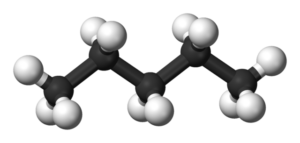Playlist
Show Playlist
Hide Playlist
Nucleophiles and Electrophiles – Alkanes and Alkenes
-
Slides Alkanes and Alkenes.pdf
-
Download Lecture Overview
00:01 Respectively, nucleophiles and electrophiles are designated Nu– and E+. But, bear in mind, not all nucleophiles or all electrophiles are always negatively and positively charged, but it’s useful way of defining their identity to understanding how they react. In organic chemistry, reactions happen between electrophiles and nucleophiles. A nucleophile is defined as an atom, ions or a molecule that have an electron pair that may be donated to form a covalent bond to an electrophile. 00:36 Electrophiles, on the other hand, accept electrons. Nucleophiles can have a negative charge, a partial negative charge as we saw there, delta- or an electron pair or pi electrons available to them. Electron pairs being, for example, on nitrogen atoms, in the case of ammonia. 00:59 Some examples of these nucleophilic species are shown below. C = C, C ≡ C, H2O, OH, CH3OH, CH3O-, CN-, NH3, NH2- and as we have seen here, a dicarbide. 01:21 Electrophiles, on the other hand, are atoms, ions or molecules which are deficient in electrons and will have the affinity for an electron pair bringing electrons to them and will bond to a base or a nucleophile accordingly. They can have a positive charge. So, for example, in the case of our HBr; H, delta H, delta+ or they have an empty orbital available. And one of the ones that springs to mind when looking at this would be the element boron, which is capable of accepting a lone pair of electrons. Examples of this would be: H+, BF3, SO3, NO2+, CH3+ and also, CH3CO+. 02:12 Organic ions which have a charge, which are localised on the carbon atom, they are called carbocations, if they have a positive charge and carboanions, if they have a negative charge. 02:24 And we’ve come across the idea of carbocations and carboanions before.
About the Lecture
The lecture Nucleophiles and Electrophiles – Alkanes and Alkenes by Adam Le Gresley, PhD is from the course Organic Chemistry.
Included Quiz Questions
Which of the following is associated with electrophiles?
- They will bond to a base.
- They have an electron pair that may be donated.
- They can have a negative or a partially negative charge.
- Cyanide ion (CN-) is an example of electrophiles.
Customer reviews
5,0 of 5 stars
| 5 Stars |
|
5 |
| 4 Stars |
|
0 |
| 3 Stars |
|
0 |
| 2 Stars |
|
0 |
| 1 Star |
|
0 |




